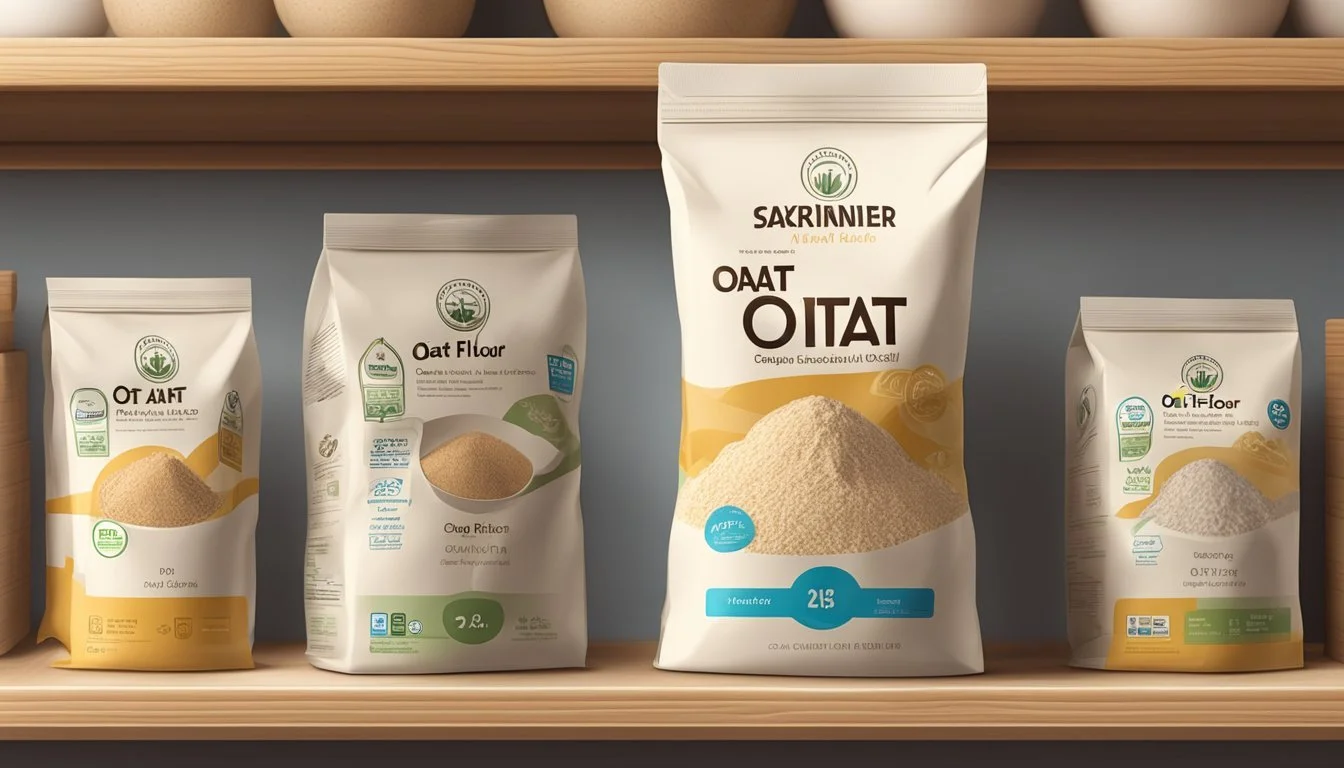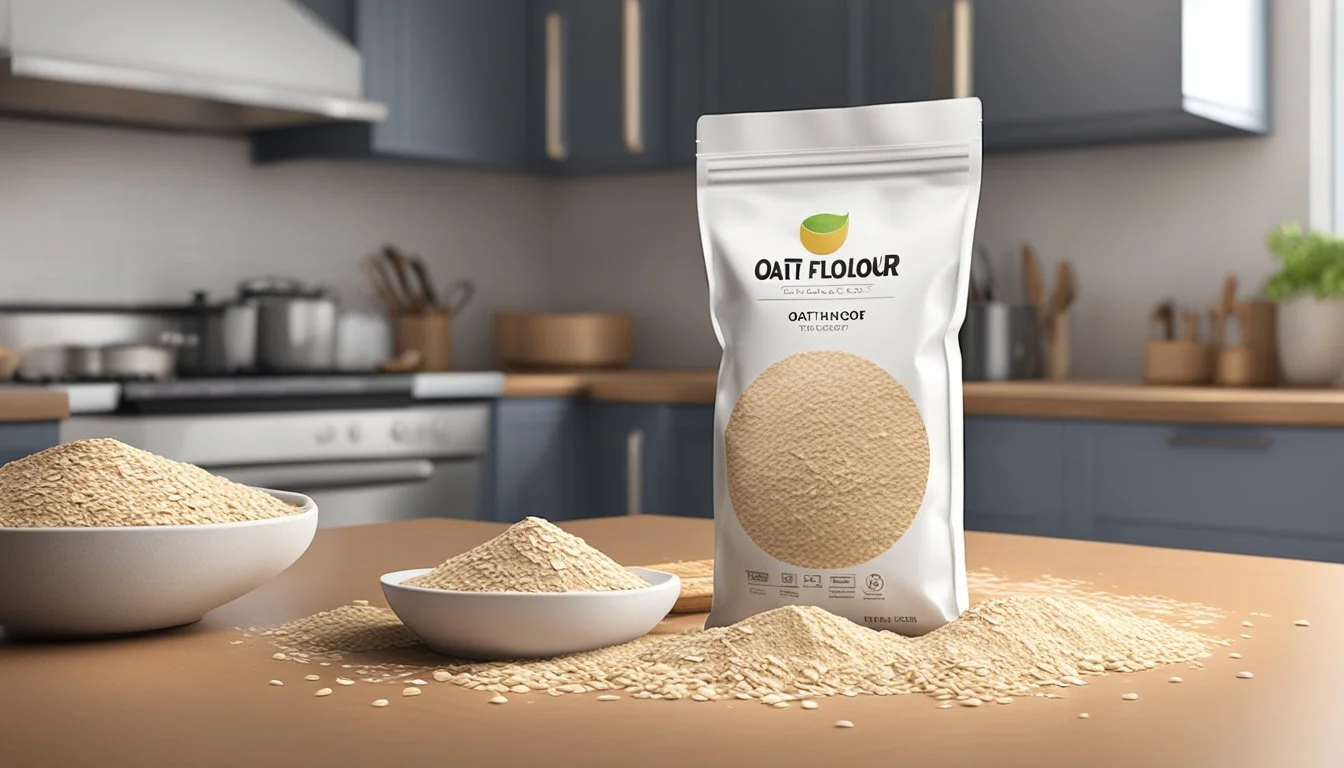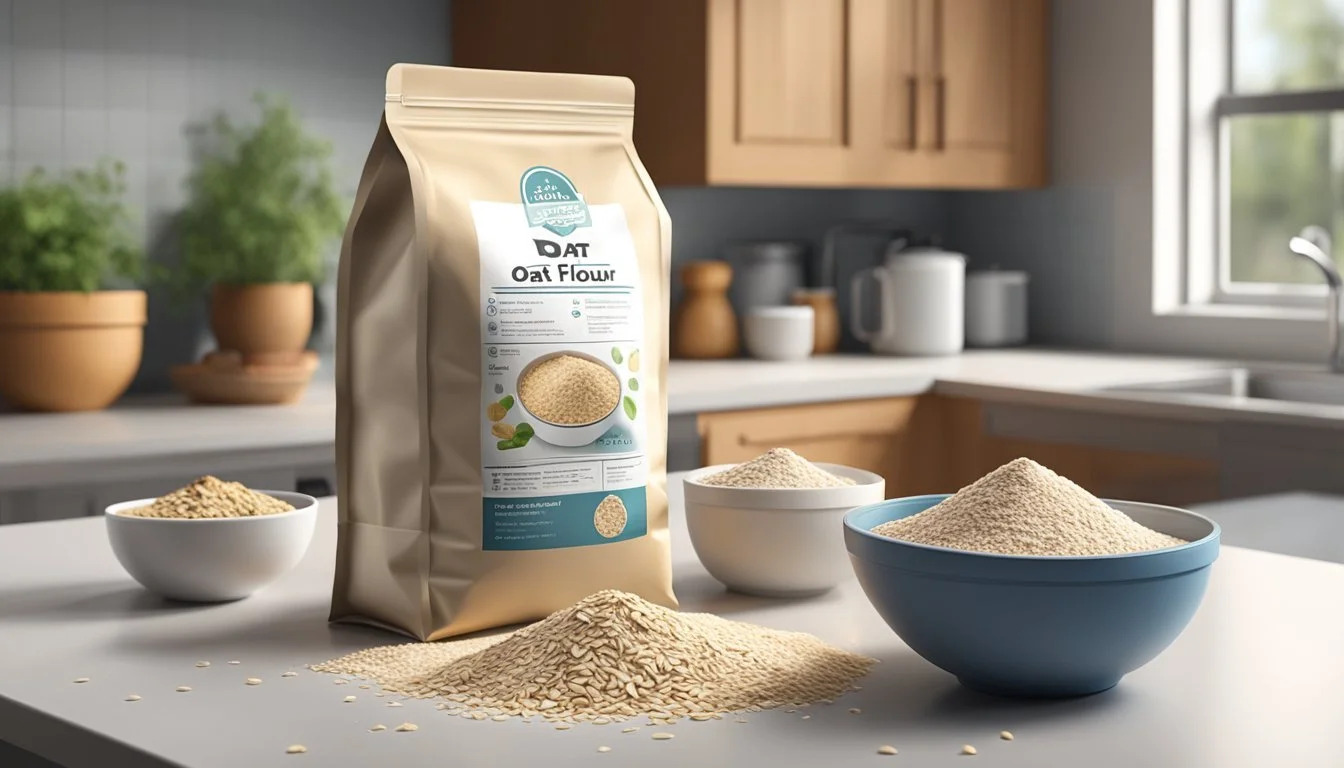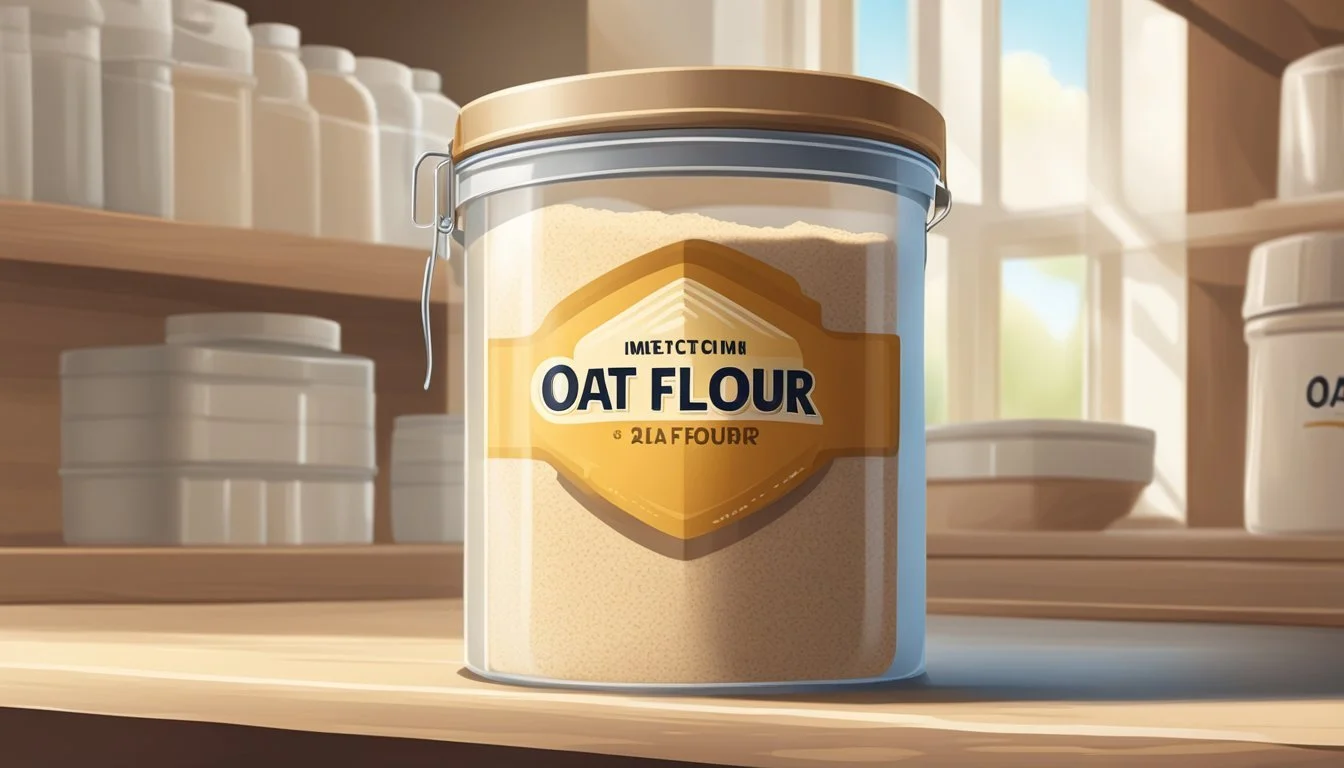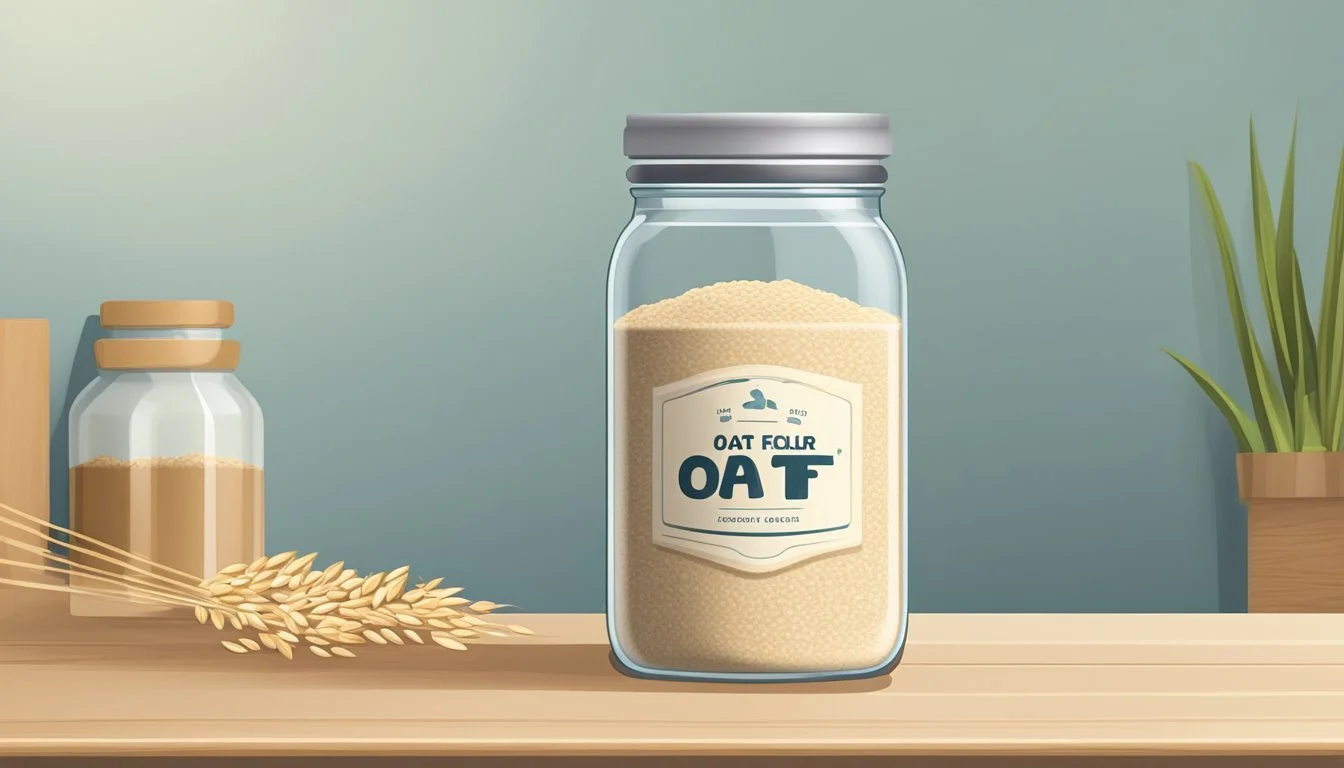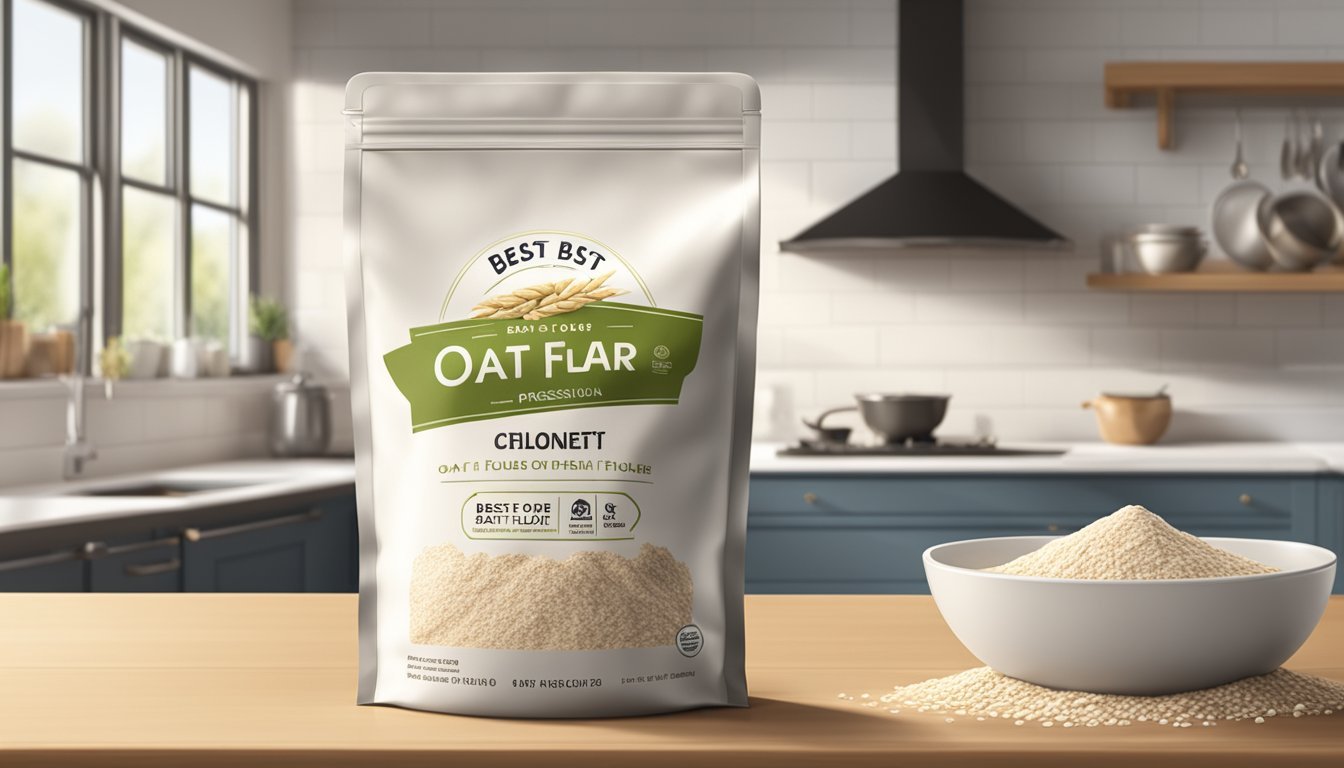Does Oat Flour Go Bad?
Understanding Shelf Life and Storage Tips
Oat flour is prized for its healthful properties and gluten-free status, making it a popular choice in many kitchens. Like any other grain-based product, oat flour has a finite shelf life and can indeed go bad over time. Several factors influence the longevity of oat flour, including its storage conditions, moisture content, and exposure to air and light. Maintaining optimum storage conditions is key to preserving its freshness for as long as possible.
To determine if oat flour has gone bad, it's essential to assess its appearance, smell, and taste. Fresh oat flour has a light, slightly nutty scent, and a pale, uniform color; any deviation, such as a rancid odor, a bitter taste, or the presence of dark spots or clumps, could indicate spoilage. These changes are often the result of oxidative reactions or the introduction of contaminants that compromise the quality of the flour, making it unsafe for consumption.
Proper storage plays a crucial role in extending the shelf life of oat flour. It should be kept in an airtight container in a cool, dry place to minimize the risk of moisture and pest intrusion. For those looking to maximize the shelf life of oat flour, refrigeration or even freezing can greatly hinder the degradation process, allowing for prolonged use without a loss in quality.
Understanding Oat Flour
Oat flour is an integral gluten-free alternative to traditional wheat flour with a unique nutritional makeup. It is highly valued for its fiber content and protein, while also being a source of essential vitamins and minerals.
Oat Flour Basics
Oat flour is produced by grinding oats, a grain known for its healthful properties, into a fine powder. This type of flour is a gluten-free alternative, making it an ideal choice for individuals with celiac disease or gluten intolerance. Unlike all-purpose flour made from wheat, oat flour offers a unique flavor profile and structural differences when used in baking. Its flavor is typically mild and slightly nutty, which makes it versatile for both sweet and savory dishes. In terms of other gluten-free flour alternatives like almond flour or coconut flour, oat flour stands out due to its distinct texture and baking properties, often requiring adjustments in recipes to achieve the desired product.
Nutrition Profile
Oat flour boasts a remarkable nutrition profile, rich in dietary fiber, specifically beta-glucan, which has been linked to improved heart health and regulation of blood sugar levels. The fiber content also contributes to a feeling of fullness, supporting weight management goals.
Nutrients Presence in Oat Flour Fiber High Protein Moderate Vitamins Present (e.g., B-complex) Minerals Contains iron, magnesium, zinc
In terms of protein, oat flour provides a moderate amount, contributing to its nutritional benefits. Moreover, oat flour contains essential vitamins and minerals, including iron, magnesium, and zinc, contributing to overall health and wellness. Its composition positions it not just as a gluten-free solution but also as a nutrient-rich option to enrich one's diet.
Shelf Life and Expiration
When considering the shelf life and expiration of oat flour, one needs to take into account the labeling, which often includes expiration dates, and the differences in longevity between opened and unopened packages.
Labeling and Expiration Dates
Manufacturers typically indicate the shelf life of oat flour on the package with an expiration date. This date provides consumers with information about how long the product will remain at its best quality when stored properly. Shelf life for unopened oat flour can range between 6-12 months, and the key to maintaining freshness is storage in a cool, dry place.
Common labeling terms:
Best By: Indicates when the oat flour is expected to start declining in quality.
Use By: Often found on packages as a food safety indicator, suggesting when to consume the flour by, for best quality.
Opened vs Unopened
Once a package of oat flour is opened, exposure to air, moisture, and other environmental factors can accelerate degradation. However, if transferred to an airtight container and stored correctly, opened oat flour can maintain its freshness.
To extend the lifespan of opened oat flour:
Refrigerate: It can help to keep the flour fresh for an extended period.
Freeze: For long-term storage, freezing is an effective method.
Storage guidelines:
Storage Method Expected Shelf Life Pantry (Unopened) Up to 12 months Refrigerator (Opened/Unopened) Beyond the typical pantry shelf life Freezer (Opened/Unopened) Longest possible freshness
Always ensure the flour is in a moisture-proof container when refrigerating or freezing. Homemade oat flour or flour not in its original packaging should be consumed within 6 months for optimal freshness.
Signs of Spoilage
Oat flour can spoil over time, and recognizing the signs of spoilage is crucial to ensure its quality. Visual changes, distinct odors, and unusual texture are key indicators that the oat flour may no longer be suitable for consumption.
Visual Clues
Inspecting oat flour for visual changes is the first step in identifying spoilage. Quality oat flour should have a uniform light tan or beige color. Signs of spoilage include:
Discoloration: Dark brown or black spots may signal the presence of mold.
Mold Growth: Any visible mold on the surface is a clear sign that the flour has spoiled and should not be used.
Changes in Odor and Flavor
Oat flour is typically odorless or has a slight nutty smell. A change in odor is a powerful indicator of spoilage:
Rancid Smell: If the flour emits a sour, musty, or rancid odor, it suggests that the fats have oxidized.
Sour Flavor: Spoiled oat flour may also taste sour or unpleasant, indicating it is no longer good to use.
Texture Variations
The texture of oat flour can also reveal its condition. Fresh oat flour should be loose and powdery. Signs of spoilage related to texture include:
Clumping: The presence of hard lumps indicates that the flour has absorbed moisture, which can lead to spoilage and mold growth.
Texture Change: Any deviation from its typical powdery consistency, such as a gritty or damp texture, suggests deterioration.
Factors Impacting Freshness
The longevity of oat flour hinges on environmental conditions and storage methodologies. Strategies to maintain its freshness include regulating environmental elements and implementing optimal storage practices.
Environmental Factors
Air: Oat flour's exposure to air can hasten oxidation, leading to staleness.
Moisture: High levels of humidity facilitate mold growth and spoilage in oat flour.
Heat: Elevated temperatures can accelerate the degradation process of oat flour.
Light: Direct exposure to light can deteriorate the quality of oat flour over time.
To mitigate these concerns, it is recommended to store oat flour in a cool, dry place, away from direct sunlight and sources of heat.
Storage Practices
Airtight Container: Storing oat flour in an airtight container is crucial to prevent the ingress of air and moisture which can compromise its freshness.
Refrigeration: For prolonging shelf life, oat flour can be refrigerated to inhibit the growth of spoilage organisms.
Dry Place: Ensuring oat flour is kept in a dry place reduces the risk of humidity-induced spoilage.
Temperature Fluctuations: Minimizing exposure to temperature changes helps to maintain the integrity of oat flour.
Condensation: Avoiding condensation within the storage container is important as it can introduce unwanted moisture.
Careful adherence to these storage practices can considerably enhance the shelf life of oat flour.
Proper Storage Solutions
Maximizing the shelf life of oat flour involves keeping it in a cool, dry environment and using methods to reduce exposure to air and moisture. Proper storage can greatly influence the longevity and quality of oat flour.
At Home Storage
For pantry storage, oat flour should be kept in a cool and dry place, away from any sources of heat and moisture. The ideal storage condition would be in an airtight container, such as a sealed jar or a vacuum-sealed bag, to protect it from humidity and pests. A dark cupboard or pantry works well, ensuring that the flour is not exposed to direct sunlight, which could affect its quality.
Recommendation: Store in opaque, airtight containers to maintain freshness and extend shelf life.
Refrigeration and Freezing
When refrigerating, oat flour should be kept in an airtight container to prevent it from absorbing odors and moisture from the refrigerator. Refrigeration can help extend the flour's shelf life beyond its typical pantry term.
Shelf Life in Refrigerator: Up to 12 months.
Freezing oat flour can prolong its usability significantly. Like refrigeration, it should be stored in moisture-proof, airtight containers or freezer bags.
Freezing Instructions:
Place oat flour in a freezer-safe bag or container.
Label with the date to keep track of freshness.
Can be stored for up to 6 months.
Using the refrigerator or freezer can be especially beneficial for whole-grain oat flour, which contains more oil and therefore has a shorter shelf life than more heavily processed flours.
Using Oat Flour in Recipes
Oat flour is a versatile ingredient in the kitchen, offering unique characteristics in terms of flavor and texture. It is particularly important in gluten-free cooking and baking, where it can be used to create delicious alternatives to wheat-based products.
Baking with Oat Flour
When baking with oat flour, one should consider that it behaves differently than traditional wheat flour. Oat flour provides a nutty taste and a tender texture to baked goods, which can enhance the flavor profile of muffins, bread, and pancakes. However, due to its lack of gluten, oat flour does not provide the same rise as wheat flour. This must be accounted for by adjusting recipes or combining oat flour with other ingredients to achieve the desired consistency and structure.
Muffins and bread: For every cup of wheat flour in a recipe, substitute 1 cup of oat flour. To provide structure, add an extra 1/4 tsp of baking powder per cup of oat flour used.
Pancakes: Oat flour can replace all-purpose flour completely in pancakes for a gluten-free option. The batter's resting time may need to be increased to allow oats to absorb the liquid.
Gluten-Free Cooking Options
For individuals with gluten sensitivities or celiac disease, oat flour is an excellent alternative to wheat flour. Not only does it offer comparable taste and texture, but it also allows individuals to enjoy a wider range of foods that would otherwise be off-limits.
Texture: Oat flour yields a softer and crumblier texture, which can be desirable in certain recipes.
Flavor: It has a milder, sweeter flavor compared to other gluten-free flours, making it ideal for baking.
Key Consideration: Always ensure the oat flour is certified gluten-free, as oats can be cross-contaminated with wheat during processing.
Preservation Techniques
Proper storage conditions are crucial to maintaining the freshness and extending the shelf life of oat flour. By understanding and applying the correct methods, one can ensure that oat flour remains of good quality for longer periods.
Extending Shelf Life
To extend the shelf life of oat flour at room temperature, it should be stored in a cool, dark, and dry place. A pantry or cupboard away from heat sources and sunlight is ideal. The use of airtight containers is also critical to protect the flour from moisture, pests, and odors, which can negatively impact its freshness and usability. Vacuum-sealing oat flour can offer additional protection against the elements, helping to preserve its quality.
Ideal Storage Conditions:
Cool
Dry
Dark
Airtight
Freezing Tips
Freezing oat flour can considerably increase its useful lifespan. When freezing, it's important to utilize moisture-proof and airtight containers to prevent freezer burn and moisture accumulation. The temperature should be kept consistently at or below 0°F to maintain the integrity of the flour. It's advisable to split the flour into smaller batches, allowing for easier use without the need to thaw the entire quantity at once. A heavy-duty freezer bag or a container specifically meant for freezing can be most effective in preserving the flour's quality.
Freezing in Batches:
Use heavy-duty freezer bags or containers
Split into usable portions
Remove as much air as possible
Label with date to track usage
Safety and Health Considerations
Assessing the safety and health aspects of oat flour is crucial, as improper storage can lead to spoilage, while proper consumption provides numerous nutritional benefits.
Food Safety
Spoilage Indicators:
Mold: Presence of mold, especially visible growths, signifies spoiled oat flour.
Odor: A musty or sour odor indicates rancidity, which occurs when the flour has oxidized.
Clumps: Oat flour absorbing moisture may clump, suggesting potential spoilage.
Prevention Measures:
Storage: Store in a cool, dry place, tightly sealed to prevent infestation and bacterial growth.
Shelf Life: Properly stored, oat flour can last 6-12 months. Refrigeration or freezing extends this period.
Health Benefits
Nutritional Content: Oat flour is derived from whole oat grains, retaining much of the grains’ nutritional value. It's rich in:
Fiber: Enhances digestive health by preventing constipation and promoting regularity.
Bran: Contains essential vitamins, minerals, and antioxidants.
Oats as Prebiotics:
They provide nourishment for beneficial gut bacteria, promoting a healthy gut microbiome.
Health Considerations:
Regularly incorporating oat flour into one's diet can contribute to overall well-being, as it is a nutritious alternative to refined flours.
FAQs about Oat Flour
Oat flour can vary in shelf life and quality depending on storage conditions and signs of spoilage. These FAQs provide insights into common issues and best practices for storage.
Common Questions
What is the typical shelf life of oat flour?
Oat flour's shelf life can range from 6-12 months when stored in a cool, dry place. The shelf life could extend further if the flour is refrigerated or frozen.
Can you tell if oat flour has gone bad?
Yes, signs include:
Odor: A sour or rancid odor indicates oxidation.
Appearance: Discoloration such as dark spots, and the presence of mold suggest spoilage.
Texture: Clumps or a stale texture can mean the flour has absorbed moisture and may be unsuitable for consumption.
Does homemade oat flour have the same shelf life as store-bought?
Homemade oat flour may have a shorter shelf life due to the lack of commercial packing and preservatives.
Is there a difference in shelf life between opened and unopened packages of oat flour?
An unopened package of oat flour generally has a longer shelf life compared to one that is opened, as exposure to air can accelerate spoilage.
Troubleshooting Storage Issues
How should oat flour be stored to maximize its shelf life?
Proper storage is key to preserving oat flour's quality:
Temperature: Keep it in a cool, dry place away from direct sunlight.
Containers: Use airtight, moisture-proof containers.
Refrigeration/Freezing: For extended storage, refrigerate or freeze the flour.
What should you do if oat flour develops an off smell or taste?
If the oat flour gives off an unusual odor or tastes bitter, it is advisable to discard it as these are signs it may have gone bad.
Can oat flour's nutritional value decrease over time?
While the flour may remain safe to eat, the nutritional value could degrade over time, especially if exposed to heat, moisture, or air.
Does the storage recommendation differ between oat flour and white flour?
The storage guidelines are similar for both oat and white flour to prevent spoilage and retain quality. However, due to the higher fat content in oat flour, it may go rancid more quickly than white flour.
Using one's senses to assess the condition of oat flour is essential in determining if it remains good to use. It's always best to check the package for specific storage recommendations and expiration dates provided by the manufacturer.

